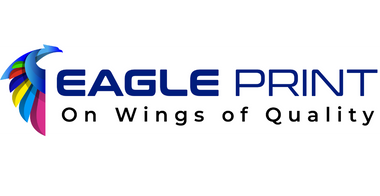7 Expert Tips to Improve Color Quality in DTF Printing

7 Expert Tips to Improve Color Quality in DTF Printing for High-Quality DTF Prints
Achieve Vibrant, Accurate, and Long-Lasting Prints
7 Expert Tips to Improve Color Quality in DTF Printing can help you unlock the full potential of your designs and ensure every print looks as vivid and professional as intended. Direct-to-Film (DTF) printing has revolutionized the custom apparel industry, offering vibrant, durable, and high-resolution prints across a wide range of fabrics — including cotton, polyester, and blends. Its ability to deliver bold colors and fine details has made it a favorite for both small businesses and large-scale production.
However, achieving optimal color quality isn’t just about having the right equipment. It also requires a combination of proper materials, carefully calibrated settings, and consistent maintenance. Without following best practices, even the best printers can produce dull or inaccurate results. Whether you're a beginner or a seasoned print professional, understanding the finer details can significantly improve your final output and customer satisfaction.
1️⃣ Utilize High-Quality Inks and Films
The foundation of exceptional DTF print quality lies in the materials used. Premium inks and films ensure better color vibrancy and consistency.
-
Inks: Opt for inks specifically formulated for DTF printing to ensure compatibility and color accuracy.
-
Films: Use PET films designed for DTF processes, as they provide better ink absorption and transfer properties.
For top-tier supplies, consider exploring Eagle DTF Print.
2️⃣ Calibrate Your Monitor and Printer Regularly
Consistent calibration ensures that the colors you see on your screen match the final print output.
-
Monitor Calibration: Use calibration tools to adjust your monitor settings, ensuring accurate color representation.
-
Printer Calibration: Regularly calibrate your printer to maintain color consistency across different print jobs.
Understanding color management is crucial; refer to Wikipedia's article on Color Management for in-depth information.
-
3️⃣ Optimize Your RIP Software Settings
Raster Image Processor (RIP) software plays a pivotal role in translating your digital artwork into precise, printable formats. It controls how colors are interpreted and how the design is processed by your printer.
Color Profiles: Ensure you're using the correct ICC profiles tailored specifically for your printer, ink, and film combination. The right profile helps maintain color consistency, accuracy, and vibrancy across all jobs. Without it, even well-designed graphics may look off when printed.
Resolution Settings: Set the resolution to at least 300 DPI (dots per inch) to capture intricate design details and preserve image sharpness. Lower resolutions may result in pixelation or blurry edges, especially on high-contrast or detailed designs. Always export your files in high resolution for the best possible output.
4️⃣ Maintain Optimal Environmental Conditions
The environment in which you print can significantly impact the quality of your DTF prints.
-
Temperature: Maintain a stable room temperature between 20°C to 25°C (68°F to 77°F).
-
Humidity: Keep humidity levels between 40% to 60% to prevent ink drying issues or static buildup.
5️⃣ Implement Proper White Ink Management
White ink serves as the base layer in DTF printing, enhancing color vibrancy, especially on dark fabrics.
-
Regular Agitation: Shake white ink cartridges daily to prevent pigment settling.
-
Nozzle Checks: Perform routine nozzle checks to ensure consistent white ink flow and prevent clogs.
6️⃣ Fine-Tune Heat Press Settings
The heat press process is critical for transferring your design from film to fabric.
-
Temperature: Set the heat press to the recommended temperature for your specific film and ink combination.
-
Pressure and Time: Apply even pressure and adhere to the suggested pressing time to ensure proper adhesion and color retention.
7️⃣ Regularly Clean and Maintain Your Equipment
Routine maintenance of your DTF printer prevents issues that can compromise print quality.
-
Printhead Cleaning: Clean the printheads regularly to avoid clogs and ensure smooth ink flow.
-
Software Updates: Keep your printer's firmware and software up to date to benefit from the latest features and improvements.
📌 Internal Resources
-
For high-quality DTF supplies, visit Eagle DTF Print.
-
Explore our DTF Printer Maintenance Guide for detailed maintenance tips.



